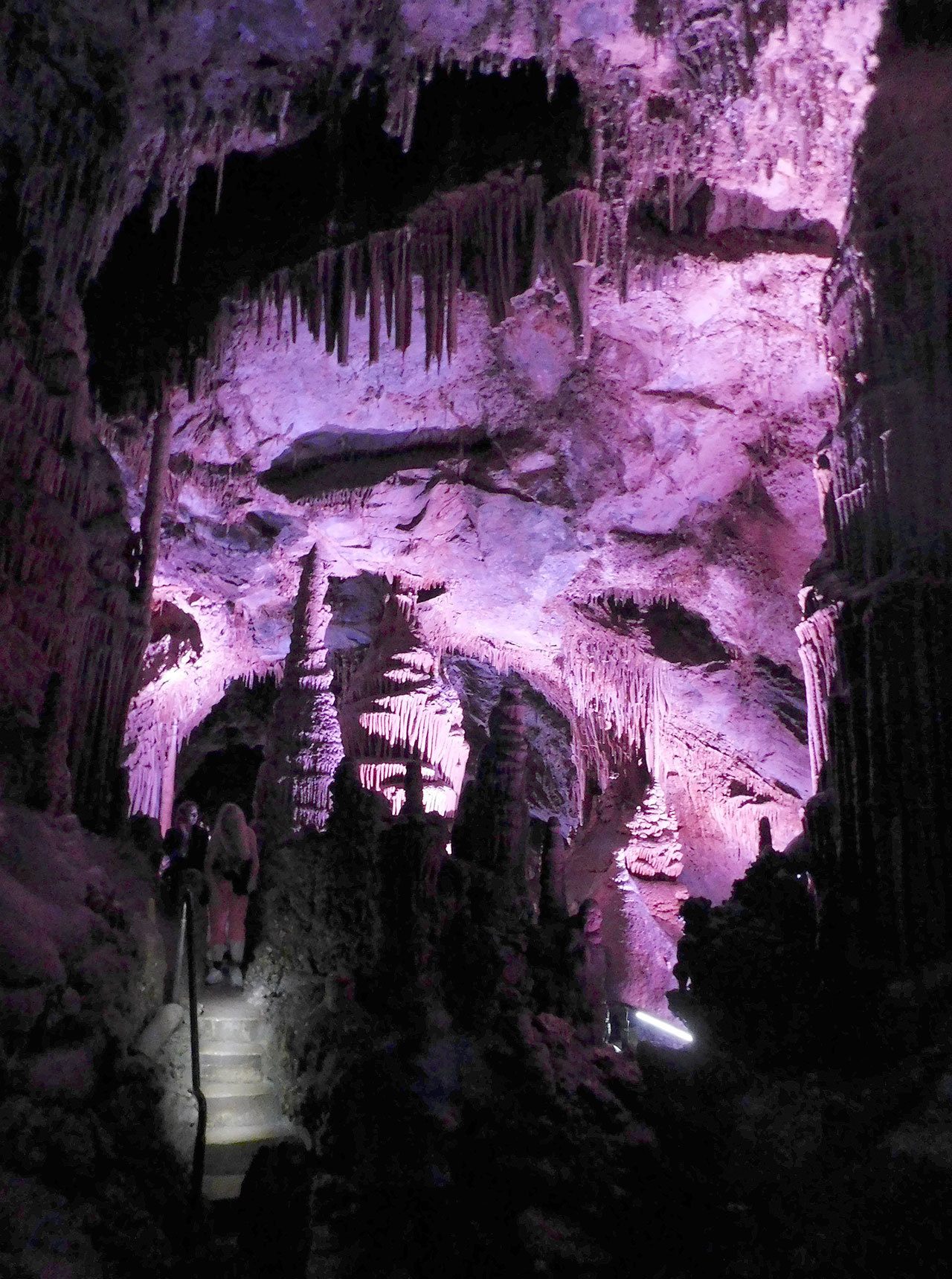Captain’s log, stardate 2016.208. My family’s mission to explore strange new worlds has taken us to southwest Montana’s Lewis & Clark Caverns State Park, home of rock formations that are unlike anything in the known universe.
But before we can venture into the cave, we have to survive the night.
After a short stay in Coeur d’Alene, Idaho, it’s been a long and unexpectedly eventful drive across the Continental Divide. A tire blowout has set us back, and when we arrive at the campground 9 miles off I-90, the skies are darkening. The wind is howling, and we have to pitch our tent before darkness or thunderstorms strike.
The tent, once constructed, acts like a giant windsock eager to take flight. As my 11-year-old son and 9-year-old daughter stand inside the tent to hold it down, visions of Dorothy and her house in “The Wizard of Oz” fill my head. Luckily some friendly aliens — they call themselves Canadians — see us in distress and offer aid. With their help, we have just enough time to get set for the night before a spectacular lightning show brightens the sky.
Captain’s log, stardate 2016.209. The next day, conditions are nowhere near as hostile to human life as they were when we arrived. The thunderstorms have given way to blue skies and temperatures in the 80s, perfect for exploring the captivating landscape of Montana’s oldest and best-known state park.
We take a kid-friendly 2-mile hike from the campground to the Jefferson River Valley, which lines the park’s southern edge. The hike is just a sampling of the activities available at the park, which features 10 miles of trails for hikers and bicyclists, interesting finds for birdwatchers, and easy access to fishing. Our path winds through hillsides lined with dry sage, small cactus plants and patchy evergreen trees. We’re surrounded in every direction by limestone formations and views of the Rocky Mountains.
While the scenery is spectacular, the main attraction is the park’s cavern, which is accessible only by guided tour. In the early evening, we drive up to the visitor center where the tour begins, high overlooking the campground and the river valley. The tour starts with a brisk uphill hike that gains a couple hundred feet of elevation as we approach the cavern entrance. For a perfect — OK, adequate — physical specimen such as myself, it’s enough to get the heart racing.
The reward comes quickly when we enter the cavern and begin to feel the refreshing natural air conditioning that keeps it a steady 50 degrees. We also meet one of the endangered Townsend’s big-eared bats that call the cavern home.
Then we begin our descent into another world. Over the two-hour tour, we go down 300 feet, down lighted walkways and stone stairs carved by Civilian Conservation Corps workers during the New Deal era. As we go down, we stop at various stages to marvel at the limestone formations and hear stories of the cavern’s colorful history and even more colorful geology.
Some of the stones have a pinkish hue, some green. Some of the rocks look remarkably anthropomorphic, and some seem to be trying to tell a story through the eons. Geologists will tell you the cave is lined with stalactites, stalagmites, columns and helictites, formed by hundreds of millions of years of natural forces in action. I will tell you it looks like the set of a fantasy movie come to life. It’s simply amazing that such a place can exist.
Meriwether Lewis and William Clark never knew it existed. The famed explorers camped within sight of the cavern in 1805, which is why the park bears their name. But like every other non-Native American settler until the 1880s, they never encountered the hidden world in the mountainside above them. Their loss is our gain, since it kept the rock formations pristine a little while longer. Now, 50,000 people visit the cave each year, getting a rare chance to see a moment frozen in geologic time.
After the tour, we head down to our campsite for dinner and s’mores. Then as the kids settle down in the tent, my wife and I watch the sun set over the Rockies and see Montana’s famous Big Sky fill with stars. Our hectic arrival had made me wonder whether camping is worth so much effort. This moment reminds me of the answer.
Captain’s log, stardate 2016.210. After a restful, lightning-free night, it’s time to pack and go find another world to explore.
“Take us out, ensign,” my son tells me as I start the car.
Somebody’s been watching too much “Star Trek.”
Doug Parry: parryracer@gmail.com; @parryracer
If you go
Directions: Take I-90 east about 640 miles to Montana’s State Highway 2. Go south about 9 miles to the park.
Cavern tours: Guided tours depart roughly every 30 minutes during daylight hours, May 1 to Sept. 30. Cost is $12 per adult (12 years and up), $5 for kids ages 6 to 11, free for kids under age 6.
Reservations: 40 RV or tent campsites, plus three cabins and one tipi are available year round. Call 855-922-6768 or go to stateparks.mt.gov.
Talk to us
> Give us your news tips.
> Send us a letter to the editor.
> More Herald contact information.

























